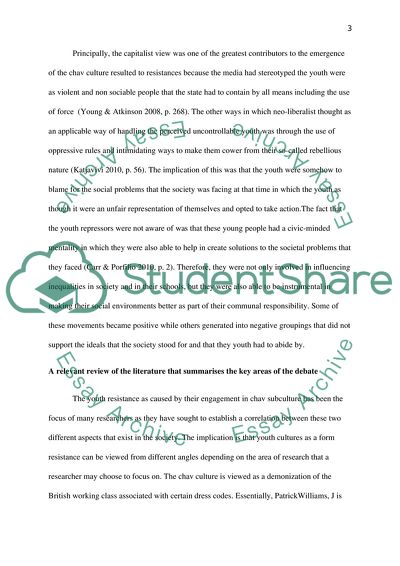Cite this document
(Youth Cultures as Cultures of Resistance Literature review Example | Topics and Well Written Essays - 2250 words, n.d.)
Youth Cultures as Cultures of Resistance Literature review Example | Topics and Well Written Essays - 2250 words. https://studentshare.org/social-science/1821944-youth-cultures-are-cultures-of-resistance-evaluate-the-extent-to-which-youth-cultures-can-be-understood-as-cultures-of-resistance-chavs
Youth Cultures as Cultures of Resistance Literature review Example | Topics and Well Written Essays - 2250 words. https://studentshare.org/social-science/1821944-youth-cultures-are-cultures-of-resistance-evaluate-the-extent-to-which-youth-cultures-can-be-understood-as-cultures-of-resistance-chavs
(Youth Cultures As Cultures of Resistance Literature Review Example | Topics and Well Written Essays - 2250 Words)
Youth Cultures As Cultures of Resistance Literature Review Example | Topics and Well Written Essays - 2250 Words. https://studentshare.org/social-science/1821944-youth-cultures-are-cultures-of-resistance-evaluate-the-extent-to-which-youth-cultures-can-be-understood-as-cultures-of-resistance-chavs.
Youth Cultures As Cultures of Resistance Literature Review Example | Topics and Well Written Essays - 2250 Words. https://studentshare.org/social-science/1821944-youth-cultures-are-cultures-of-resistance-evaluate-the-extent-to-which-youth-cultures-can-be-understood-as-cultures-of-resistance-chavs.
“Youth Cultures As Cultures of Resistance Literature Review Example | Topics and Well Written Essays - 2250 Words”. https://studentshare.org/social-science/1821944-youth-cultures-are-cultures-of-resistance-evaluate-the-extent-to-which-youth-cultures-can-be-understood-as-cultures-of-resistance-chavs.


